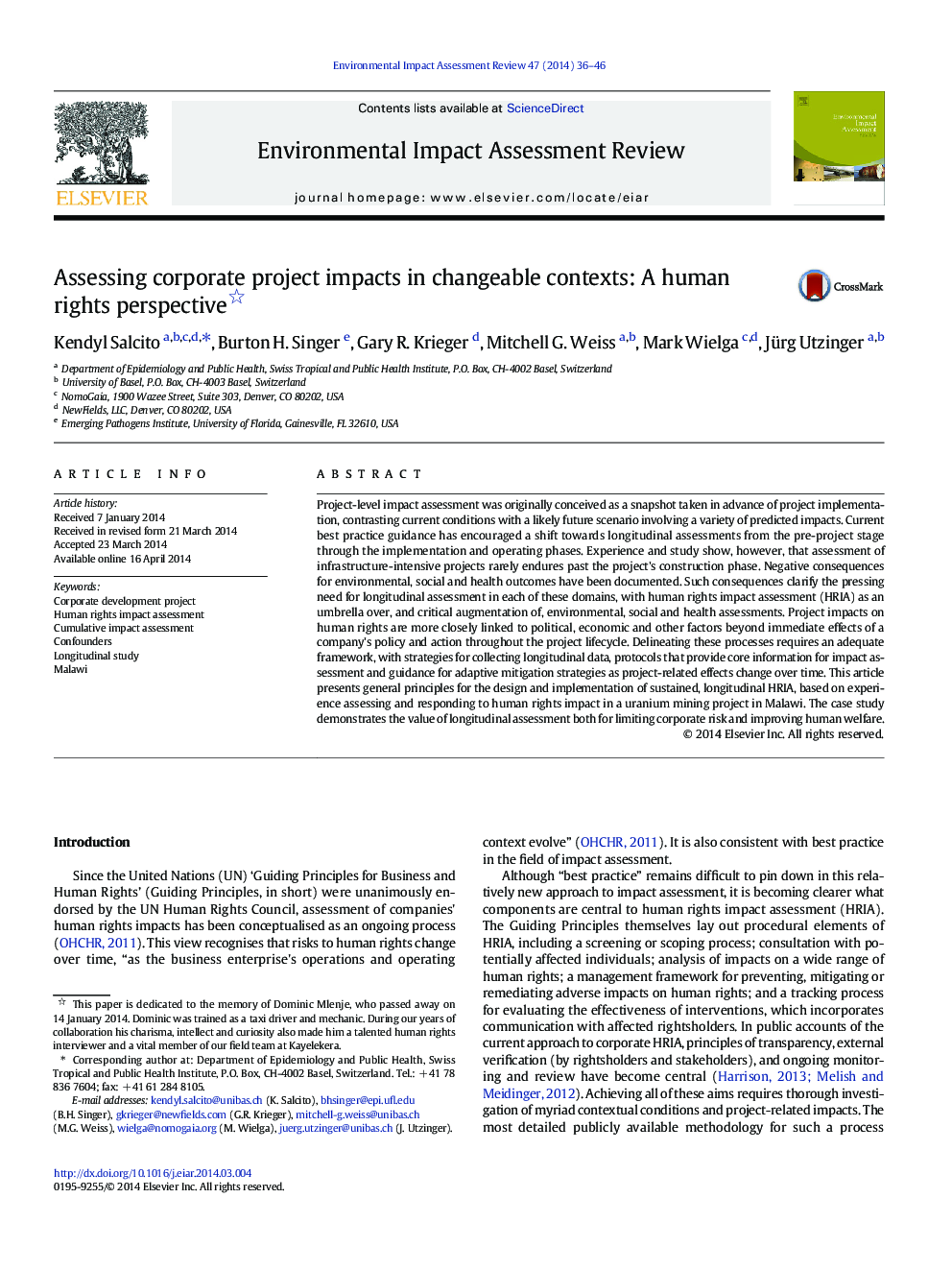| کد مقاله | کد نشریه | سال انتشار | مقاله انگلیسی | نسخه تمام متن |
|---|---|---|---|---|
| 1052787 | 1484998 | 2014 | 11 صفحه PDF | دانلود رایگان |
• Corporate capital projects affect human rights in myriad ways.
• Ongoing, longitudinal impact assessment techniques are needed.
• We present an approach for conducting longitudinal human rights impact assessment.
• Our methodology allows distinguishing corporate impacts from contextual changes.
• Promptly observing context changes and impacts enables companies to react nimbly.
Project-level impact assessment was originally conceived as a snapshot taken in advance of project implementation, contrasting current conditions with a likely future scenario involving a variety of predicted impacts. Current best practice guidance has encouraged a shift towards longitudinal assessments from the pre-project stage through the implementation and operating phases. Experience and study show, however, that assessment of infrastructure-intensive projects rarely endures past the project's construction phase. Negative consequences for environmental, social and health outcomes have been documented. Such consequences clarify the pressing need for longitudinal assessment in each of these domains, with human rights impact assessment (HRIA) as an umbrella over, and critical augmentation of, environmental, social and health assessments. Project impacts on human rights are more closely linked to political, economic and other factors beyond immediate effects of a company's policy and action throughout the project lifecycle. Delineating these processes requires an adequate framework, with strategies for collecting longitudinal data, protocols that provide core information for impact assessment and guidance for adaptive mitigation strategies as project-related effects change over time. This article presents general principles for the design and implementation of sustained, longitudinal HRIA, based on experience assessing and responding to human rights impact in a uranium mining project in Malawi. The case study demonstrates the value of longitudinal assessment both for limiting corporate risk and improving human welfare.
Assessing changes in human rights condition as affected by both project and context, over time.Figure optionsDownload as PowerPoint slide
Journal: Environmental Impact Assessment Review - Volume 47, July 2014, Pages 36–46
